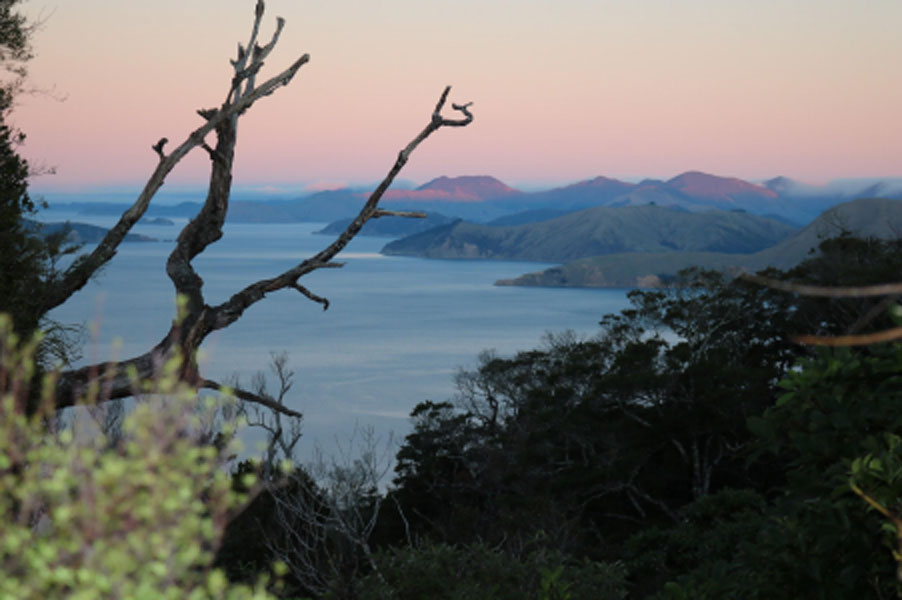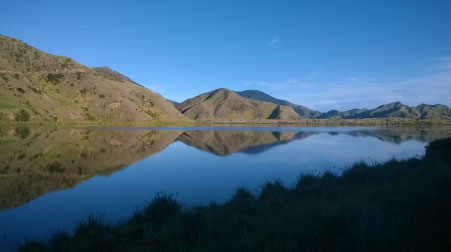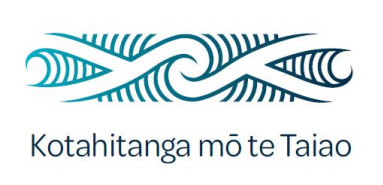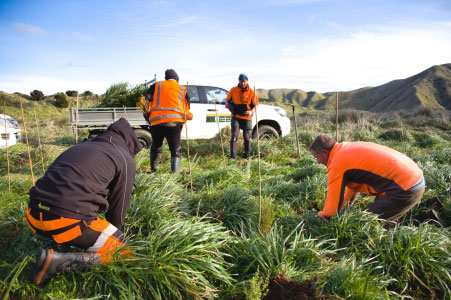Tiaki Taiao
Te Taiao is critical to the sustenance of life. All animals and humans require all environments to exist and be healthy.Ehara taku toa
I te toa takitahi
Engari, he toa takitini
Success is not the work of one but the work of many.
Ngāti Koata Trust’s Te Taiao strategic intent is to maintain, strengthen and develop our kaitiakitanga and relationship with our environment.
The management of Te Taiao is dependent on how natural attributes are managed and utilised, preserved and conserved, restored, and replenished for their own intrinsic worth against developments and impacts of pollution and natural disasters.Plants require water, water is replenished by rain and snow, and wind requires heat from the earth and vapours and moistures from the oceans.
Ngāti Koata prides itself on maintaining a strong commitment to the environment within our rohe and beyond. The past few years have been very active ones for our environmental projects with some very significant gains. The completion of the Takapourewa Joint Co-Operational Plan with Te Papa Atawhai, and the establishment of the Project Moturoa Māori Trainee Ranger programme are important to Ngāti Koata for the management and development of our kaitiakitanga responsibilities.


Lake Moawhitu Restoration and Planting programme
The key platforms to this kaupapa are in the planting programmes and the ongoing restoration of the lake, fauna and flora of Rangitoto island.
The Moawhitu Restoration Project is a joint venture between Ngāti Koata, DOC and our funders to establish native plantings around the shores of the lake at Moawhitu on Rangitoto. The aim is to restore the natural habitats of fish and bird species on Rangitoto, and clean the lake of pollutants. Every year there are a number of planting trips planned and we are always calling for volunteers. Please contact the office if you are interested in participating in any upcoming trips.
Kotahitanga mo Te Taiao Alliance

The environment and people are interconnected. Look after the environment and the environment will look after you.
Kotahitanga mō te Taiao is an alliance formed by all the Councils and some of the iwi of Te Tauihu and the Department of Conservation(DOC). The focus is on landscape-scale conservation projects that also have environmental, social, economic, and cultural benefits. Many of our biodiversity taonga are unique to New Zealand (Aotearoa).
One of the main pillars of the Alliance’s strategy is to continuously facilitate collective action, enable access to funding opportunities as well as enable enhancement and delivery of biodiversity outcomes. Kotahitanga is also about collaboration, working together to achieve shared outcomes that enhance and protect te Taiao, our natural heritage. The Alliance is committed to working in partnership to align and integrate the efforts of Alliance members. This strategy has been created with the support of practitioners and scientists active in natural heritage management.


Photos taken by Andrew MacDonald NZAndy
Takapourewa Co-Management Partnership
Before the marine safety beams started shining in 1894, visitors to the island reported an abundance of wildlife on a forest-covered island. Then trees and bush started to be cleared, making room for buildings and for grazing sheep and cattle.
In 1953 a revegetation programme was launched and a major part of the DOC ranger’s work these days is collecting seeds and propagating plants. Once a year, we call on volunteers to come to Takapourewa and help with the mass planting and revitalisation programme.
Photos taken by Andrew MacDonald NZAndy
Project Mahitahi
Project Mahitahi builds on work that landowners in the catchment and the wider community have been doing for many years, with funding of $1.7 million from Ministry for the Environment to implement an ecological restoration plan for the Maitahi catchment, and $2 million from the Department of Conservation Kaimahi for Nature fund – the project is the first in the country to be granted this funding through a regional alliance involving councils and iwi.
Over five years Project Mahitahi will provide local employment opportunities as part of the COVID-19 recovery, plant 125,000 trees including Taonga species, restore 1.3 hectares of wetlands and carry out pest plant control in the Maitahi and Brook Waimarama catchment.

The ecological restoration plan for the project has the following goals:
enhanced water quality
a reduction in weeds that will help to reduce the spread of invasive plant species across a wider area
habitat improvement
the preservation of indigenous tree and plant species, some of which are found only in the Maitahi Valley
the development of a food corridor that will support the movement of native bird species across the Nelson region
benefits for taonga species such as kōura/freshwater crayfish, tuna/eels, inanga/native fish




